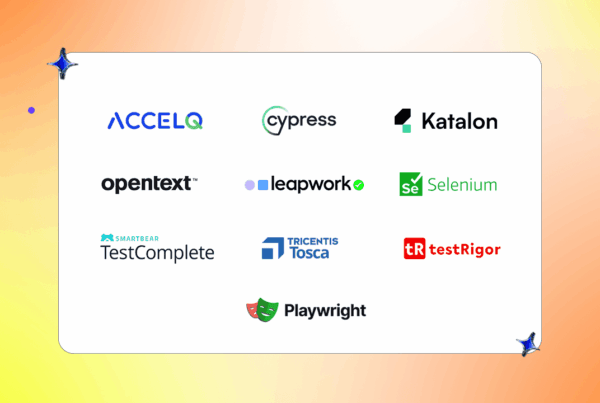Model Based Testing: A Smarter Approach to QA

Traditional testing methods frequently need help keeping pace with software releases' growing complexity and frequency. Model-based testing (MBT) is significant in this situation. MBT employs a systematic strategy for software testing by utilizing models that depict the anticipated behavior of the system being tested.
These models are utilized for the automated generation and execution of test cases, guaranteeing thorough test coverage and streamlined testing procedures. This blog will discuss the concept of Model-Based Testing in detail.
What is Model Based Testing?
Model-based testing (MBT) in software testing is an approach in which models are created to produce test cases and validate system behavior. These models use conceptual representations covering the capabilities, processes, and scenarios the system is expected to control. MBT mainly aims to automatically create test cases based on these models, ensuring the coverage of all practical paths and scenarios.
Types of MBT Testing
Finite State Machine Based Testing (MBT)
It is a specific type of model-based testing (MBT) that precisely depicts and simulates the system's behavior under test using state machines or deterministic finite automation. The model shows the several states the system can consider and the changes between those states started by events.
Unified Modeling Language (UML)
The activity diagrams show system control or data transfer. These diagrams let one visualize and analyze the dynamic components of the system in Model-Based Testing (MBT).
Model-Based Testing (MBT)
It uses Markov chains to model stochastic systems in which the next state is independent of the past sequence of events and purely decided by the current state.
Decision Table-Based Testing
Decision Table-Based Testing involves using decision tables to represent and analyze intricate business rules. Within the Model-Based Testing (MBT) context, these tables establish a correlation between specific situations and associated actions. This correlation aids in creating thorough test cases that encompass all potential combinations of inputs and their related outputs.
Data Flow Testing
Data Flow Testing is a technique for representing data movement within a system. The system monitors the entire data lifecycle, from input to processing to output, explicitly emphasizing data access and modification across various components.
Role of AI in Model-Based Testing
Artificial intelligence utilizes data-driven insights and machine learning algorithms to enhance the efficiency and efficacy of MBT.
Intelligent Model Generation:
AI can facilitate the automated creation of models using available system data, user behavior, or previous test cases. This minimizes the time and effort needed to generate precise models, particularly for intricate systems.
Predictive Analytics:
Artificial intelligence can anticipate probable areas of defects in the system by examining past data and the current behavior of the model. This enables testers to concentrate on regions with high potential risks, enhancing the likelihood of identifying crucial concerns early.
Test Case Optimization:
Artificial intelligence may examine the test cases developed to detect redundant or unneeded tests. This process optimizes the test suite, allowing faster execution without sacrificing test coverage. This is especially advantageous in settings with limited testing resources or time limitations.
Adaptive models:
AI can evolve by incorporating feedback from test results and adapting to system changes. This adaptive feature guarantees that the models stay relevant and up-to-date even while the system is being changed.
Continuous Testing with AI Driven Automation:
By automatically modifying models and generating new test cases to fit system changes, AI guarantees that testing stays in line with the fast-paced development cycles. It also helps to enable the smooth integration of testing into Agile and DevOps setups.
How Model-Based Testing Works?
Model Based Testing is a systematic methodology that starts with creating a model that accurately imitates the expected system behavior. It then proceeds to construct and assess test cases based on this model. The following is a comprehensive explanation of the sequential procedure of how MBT works:
Step 1: Model Creation
Creating a model of the system aids in defining the test scenarios, which can subsequently be automated with ease. This stage guarantees that the tests are founded on an understandable and organized portrayal of the system.
Step 2: Model validation
It verifies that the automated tests are constructed on precise and dependable foundations. This stage aligns with the model-based automation testing process by guaranteeing that the tests will accurately depict the system's behavior.
Step 3: Test Case Generation
It verifies that the automated tests are constructed on precise and dependable foundations. This stage aligns with the model-based automation testing process by guaranteeing that the tests will accurately depict the system's behavior.
Step 4: Test Execution
The execution of the created test cases can be easily integrated into automated testing frameworks without any difficulty. This guarantees that tests are executed consistently and regularly as an integral component of the automated test suite.
Step 5: Result Analysis and Feedback
Automated analysis of test results and feedback integration into the model guarantee ongoing enhancement and synchronization of the testing process with system updates, reinforcing automated testing's iterative characteristic.
Step 6: Model and Test Case Maintenance
It is crucial to keep the model software testing process and test cases up to date in a Model based test automation environment. This ensures that changes are promptly and accurately reflected without requiring considerable manual intervention.
Example of Model Based Testing
Scenario: E-commerce Checkout Process
Model Creation:
A flowchart model is generated to represent the checkout process in an e-commerce application. This model encompasses many processes, including adding items to the cart, inputting shipping details, choosing payment methods, and verifying the transaction.
Test Case Generation:
-
- The model generates test cases for many scenarios, including:
- Successful order placing using a valid credit card.
- Managing erroneous payment details.
- Testing the functionality of the “guest checkout” feature without requiring user authentication.
Test Execution:
The test cases are automatically conducted to verify that the checkout process functions well in various scenarios, including handling errors for incorrect inputs.
This concise example demonstrates how Model-Based Testing (MBT) might guarantee the dependability of critical procedures, such as an e-commerce checkout, by systematically encompassing every possible scenario.
Best Practices in Implementing Model-Based Testing
| Best Practice | Approach | Benefit |
|---|---|---|
| Start with Simple Models | Begin by modeling basic functionalities to introduce the team to the MBT process. | Builds confidence and establishes a foundation for handling more complex models. |
| Involve Stakeholders Early | Engage developers, testers, and business analysts from the outset. | Ensures the model accurately reflects requirements, reducing potential issues in the testing process. |
| Continuous Model Validation | Regularly validate the model throughout the development lifecycle. | Maintains model relevance and accuracy, ensuring test cases remain effective as requirements evolve. |
| Tool Selection and Integration | Choose MBT tools that integrate well with your development and testing environments. | Streamlines the MBT process, making adoption easier and more effective within existing workflows. |
| Focus on Maintainability | Design models and test cases to be easily maintainable as the system evolves. | Ensures long-term efficiency and effectiveness, allowing the MBT process to adapt to system changes. |
Conclusion
Implementing MBT requires thorough preparation, the appropriate tools, and a dedication to ongoing validation and development. Following best practices, such as beginning with basic models, including stakeholders early, and emphasizing maintainability, allows companies to effectively include MBT in their testing process, resulting in better quality software.
Advanced testing approaches like MBT will become more critical as software systems get more complicated. By using MBT, companies can keep ahead of the curve and provide consistent, strong software in a constantly changing digital terrain. Get an ACCELQ demo today to understand its benefits in depth.
Discover More
 Top 10 Functional Testing Tools for End-to-End Automation
Top 10 Functional Testing Tools for End-to-End Automation
Top 10 Functional Testing Tools for End-to-End Automation
 Functional vs Non-Functional Testing in Software Testing: Why Both Matter
Functional vs Non-Functional Testing in Software Testing: Why Both Matter

































